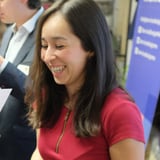Summary
Directly experiencing research with customers has a powerful focusing effect on teams and decision-making. This case study describes how we created a massively scaled customer research program at Autodesk, in coordination with our large user conference, Autodesk University in Las Vegas, and how we then synthesized and shared the customer insights back with our employees. This program has helped cross-functional teams make better product decisions, deepen customer empathy, and break down silos. We’ll share lessons learned and the keys to success of this program that invites anyone in the company to conduct customer research.
Key Insights
-
•
Autodesk’s complex product ecosystem creates silos that hinder sharing of customer insights across teams.
-
•
Early research at Autodesk University was fragmented and logistically challenging before a centralized program emerged.
-
•
The Voice of the Customer program evolved from isolated focus groups to a large, multi-team Idea Exchange event involving 40 teams and 70 studies.
-
•
Democratizing research gave non-researchers, like marketers and legal teams, direct customer contact and valuable new perspectives.
-
•
Executive sponsorship from Maria Judice was critical to scaling and legitimizing the research program company-wide.
-
•
Creating themed tracks aligned with business goals helped synthesize diverse research and made insights accessible to executives.
-
•
Track leads like Adam served as vital connectors and synthesizers, enabling cross-team sharing and raising the quality of reporting.
-
•
Leveraging design thinking tools and partnerships (e.g., Luma Institute) enhanced the quality and creativity of customer engagement at AU.
-
•
A formal share-back event using an online conference format successfully maintained momentum and ensured insights were disseminated.
-
•
The customer research program acts as a cultural gateway drug, building ongoing empathy and customer-centric focus internally at Autodesk.
Notable Quotes
"Our products are powerful and complex, and customers use them end to end from concept to creation and monitoring."
"Some of the same things that help you scale can also feel like they get in your way."
"Customer understanding gives teams focus. Customer empathy gives purpose."
"The Idea Exchange got 40 teams to participate together across design, research, marketing, program management, even legal."
"We ditched the lab coats because they were a little off-putting."
"The secret ingredient to making this work and scale has been identifying and empowering track leads."
"It is a lot more meaningful when I can meet with batches of customers in person and see their reactions, knowing I can improve their working life."
"Post-AU, I feared no one would synthesize or share what they learned because everyone got busy and distracted."
"We created simple report templates to help people who have never done research before share their insights."
"This program has become the gateway drug for customer research for people who didn’t know its power or value before."
Or choose a question:
















More Videos

"I grew restless within the walls of architecture and wanted to apply design principles more broadly."
Steve ChaparroBringing Into Alignment Brand, Culture and Space
August 13, 2020

"Making images and text more legible over complex backgrounds is both a tactical design and accessibility challenge."
Elizabeth ChurchillExploring Cadence: You, Your Team, and Your Enterprise
June 8, 2017

"We come to these spaces not to escape but to partake of them."
Sha HwangThe First Fifty Years of Civic Design
November 16, 2022

"You do not have to go publicly thank the employer who just laid you off. They’ll be fine without it."
Corey Nelson Amy SanteeLayoffs
November 15, 2022

"Traditional journey maps are useless diagrams that don’t capture the real emotional and contextual complexity."
Noz UrbinaRapid AI-powered UX (RAUX): A framework for empowering human designers
May 1, 2025

"Organizations say they want to break down silos but often create new ones in product teams; service design helps reconnect them."
Lavrans Løvlie Ben ReasonAsk me anything – Authors of Service Design: From Insight to Implementation
November 19, 2025

"Design teams reporting through engineering tend to have the worst quality scores."
Peter MerholzThe 2025 State of UX/Design Organizational Health
November 12, 2025

"Psychological warmth and physical warmth activate the same part of the brain, the insula."
Daniel GloydWarming the User Experience: Lessons from America's first and most radical human-centered designers
May 9, 2024

"You can't lay off the infrastructure, like the tooling and operations teams; they're harder to cut."
Louis RosenfeldCoffee with Lou
January 11, 2024
Latest Books All books
Dig deeper with the Rosenbot
How can research maturity frameworks help prepare organizations for expanded research roles?
How can designers use tools to reduce energy impact early in the design process?
How should service designers adapt their approach when working in different cultural and market contexts, like the US versus Europe?

















